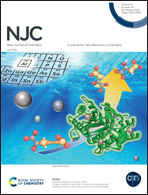Recent advances in C–CN and C–H bond activation of green nitrile (MeCN) for organo-complexation, cyanation and cyanomethylation†
Abstract
The use of green and inexpensive organic nitrile (MeCN) as a cyano and cyano-methyl source for organo-complexation, cyanation, and cyanomethylation is reviewed. In recent decade, a lot of developments have been made to realize the possibility of using a green cyanide source (MeCN) for cyanation, and this CN source has been used as, for example, a slow dosage cyanide source that could solve the problem of using metal cyanides (K4[Fe(CN)6], Zn(CN)2, KCN, CuCN, NaCN), which (1) tend to cause rapid deactivation of the catalyst and (2) are notoriously toxic, producing highly toxic HCN gas in reactions. In view of these problems, here we attempted to discuss new catalyst systems to achieve the cyanation of various aromatic hydrocarbons, such as aryl halides, aryl boronic acids, aryl carboxylic acids, indoles, diazoarenes, aryl alkynes, aryl sulfonamides, and directing group substituted arenes, under variety of reaction parameters. Moreover, acetonitrile is used as the carbon pro-nucleophile in C–C bond formation, which involves complications usually associated with the catalyst active mode or its resting state. This review demonstrates a set of innovations for practical usage via direct complexation, cyanation and cyanomethylation methodologies.

- This article is part of the themed collection: 2020 Focus and Perspective articles


 Please wait while we load your content...
Please wait while we load your content...